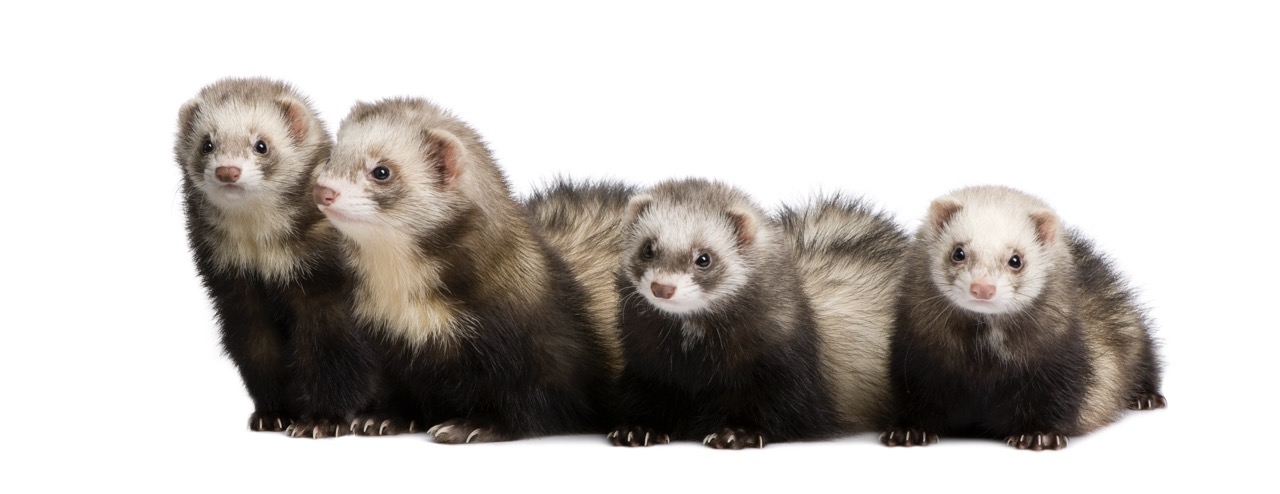Ferrets are fascinating creatures known for their playful nature and inquisitive behaviors. As domesticated relatives of the European polecat, ferrets have unique biological characteristics that influence their sensitivity to temperature. Understanding these physiological traits can help ferret owners ensure optimal conditions for their pets, particularly as temperatures fluctuate throughout the year. In this article, we will explore how ferret biology impacts their temperature regulation, the role of fur and fat in maintaining their body heat, their behavioral adaptations to temperature changes, and the implications for ferret care in various climates and seasons.
Understanding Ferret Physiology and Temperature Regulation
Ferrets have a unique physiology that affects their ability to regulate body temperature. Unlike some mammals that have highly developed mechanisms to maintain internal temperatures, ferrets are more susceptible to external temperature fluctuations. Their normal body temperature ranges from 100°F to 104°F (approximately 37.8°C to 40°C). Understanding this range is crucial for ferret owners, as deviations can lead to health issues. For instance, ferrets can suffer from heat stress if temperatures exceed their comfort zone, prompting owners to take extra care during warmer months.
Ferrets possess a relatively high surface area-to-volume ratio, making them more prone to rapid heat loss in cold environments. Their small size and lightweight bodies mean that they can lose body heat quickly, especially in drafty or uninsulated spaces. As a result, environmental temperatures that may be comfortable for humans can be dangerously low for ferrets, potentially leading to hypothermia. This sensitivity necessitates careful monitoring of their surroundings to ensure their well-being.
Additionally, ferrets’ metabolic rates are adapted to their active lifestyles. They are naturally energetic and require an appropriate temperature range to thrive. If temperatures dip too low or rise too high, their activity levels can decrease, impacting their health and behavior. Maintaining a stable environment is necessary to support their metabolic needs and overall vitality, emphasizing the importance of understanding their physiological responses to temperature changes.
The Role of Fur and Fat in Ferret Temperature Sensitivity
The fur of a ferret plays a significant role in protecting them from temperature extremes. A ferret’s coat consists of two layers: an undercoat that provides insulation and an outer layer of guard hairs that repel moisture. This combination helps to keep ferrets warm in colder temperatures by trapping heat close to their bodies. However, this insulation can also lead to overheating in warmer months, making it essential for owners to be mindful of their ferret’s environment and activities during hot weather.
Fat deposits in ferrets also contribute to their temperature regulation. While ferrets are slender animals, they do have a layer of fat that helps insulate their bodies against cold. However, excessive fat can inhibit their ability to dissipate heat during warmer temperatures, leading to potential health risks. Therefore, it is vital for ferret owners to monitor their pets’ diets and body conditions to ensure they maintain a healthy weight and optimal temperature regulation capabilities.
Moreover, seasonal changes can lead to variations in a ferret’s coat. During colder months, their fur may become denser as a natural adaptation to help them retain heat. Conversely, as temperatures rise, ferrets may shed some of their fur to allow for better heat dissipation. This cyclical change illustrates how their biological makeup is closely linked to environmental conditions, further emphasizing the need for attentive care during different seasons.
Behavioral Adaptations of Ferrets to Temperature Changes
Ferrets exhibit various behavioral adaptations in response to temperature fluctuations, allowing them to cope with their environment. One common behavior is burrowing, where ferrets instinctively seek small, confined spaces to conserve heat. This behavior is rooted in their ancestral instincts, where hiding in dens protected them from extreme weather conditions. In a domestic setting, providing ferrets with cozy hideaways can help them feel secure and retain warmth during colder periods.
In warmer weather, ferrets often display behaviors such as seeking cooler surfaces or engaging in activities that increase air circulation around their bodies. They may lie on cool tiles or seek out shaded areas to help regulate their body temperature. This instinctive behavior underscores the importance of observing your ferret’s activity patterns and environment, allowing owners to create a comfortable setting that promotes their pets’ health and well-being.
Moreover, hydration becomes increasingly important as temperatures rise. Ferrets may drink more water and seek out moisture-rich food during hotter months. Owners should ensure that fresh water is always accessible and monitor their ferrets’ hydration status. Understanding these behavioral adaptations aids owners in providing an environment that meets their ferrets’ needs in the face of temperature variations.
Implications for Ferret Care in Varied Climates and Seasons
Proper ferret care requires an awareness of the environmental challenges posed by different climates and seasons. In colder regions, it is essential to provide appropriate shelter that minimizes drafts and retains heat. Indoor habitats may need additional bedding or heat sources, such as heat lamps, to ensure ferrets remain comfortable during winter. Additionally, outdoor exposure should be carefully monitored to prevent hypothermia, particularly during freezing temperatures.
Conversely, in hotter climates, ferret owners need to focus on preventing overheating. Providing ample shaded areas and ensuring access to cool surfaces can help ferrets regulate their body temperature. Air-conditioned environments or fans may also be beneficial to maintain a comfortable living space. Owners should monitor their ferrets closely during heat waves to identify signs of heat stress or dehydration, enabling prompt intervention if necessary.
Seasonal changes can also prompt adjustments in diet and exercise routines. For instance, during the warmer months, owners might consider offering more hydrating foods or adjusting feeding schedules to align with their ferrets’ activity levels. Understanding how temperature affects ferrets’ behavior and health allows owners to tailor their care strategies accordingly, ensuring their pets remain happy and healthy throughout the year.
In conclusion, the unique biology of ferrets significantly influences their sensitivity to temperature, making it essential for owners to understand these factors when caring for their pets. From their physiological traits to behavioral adaptations, ferrets require a carefully managed environment that considers seasonal changes and climate variations. By staying informed about how temperature impacts ferret health, owners can provide the best possible care, ensuring their furry companions thrive in both cold and warm conditions. Through proactive measures and attentive care, ferret owners can enhance the quality of life for their pets, allowing them to enjoy a vibrant and active lifestyle.










